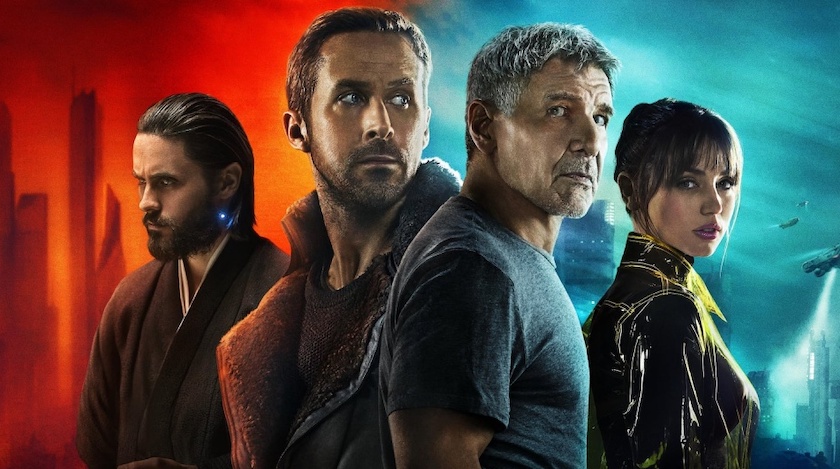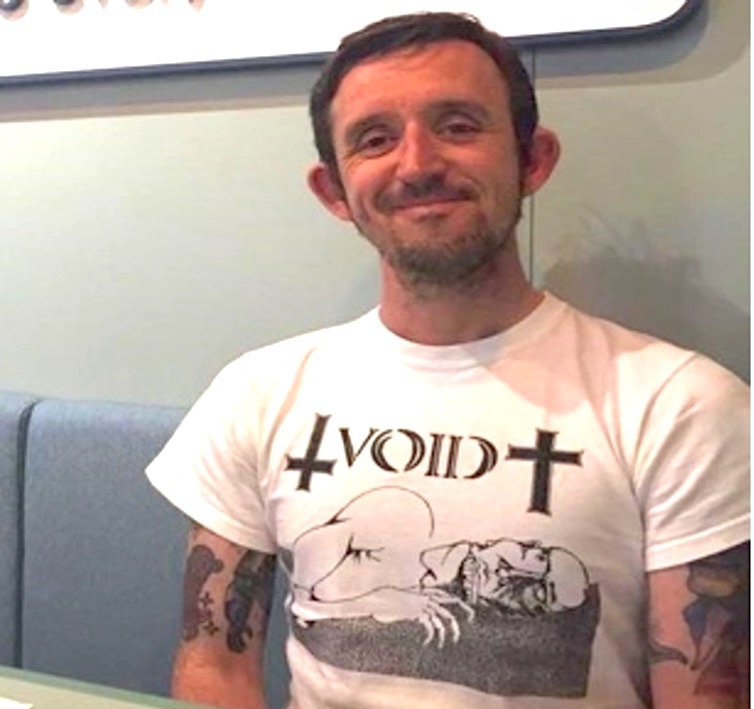
In the year 2049, Blade Runners operate as an arm of the police force, ‘retiring’ rogue and older model replicants. Blade Runner K (Ryan Gosling), sent to a protein farm to retire the replicant Sapper Morton (Dave Bautista), happens on a discovery that will lead him to question everything he knows about replicants and humans, as well as his own history. Played by all sides, he is ordered by his boss Lt Joshi (Robin Wright) to cover up his findings, while simultaneously pursued by the Wallace Corporation, and its enigmatic head Niander Wallace (Jared Leto), who have absorbed the Tyrell Corporation and lead the market in replicant manufacture. K’s investigation leads him inexorably to the doorstep of former blade runner Rick Deckard (Harrison Ford).
Blade Runner 2049, much like the original, is a detective potboiler. Co-written by original screenwriter Hampton Fancher, you could conceivably transpose the story to a contemporary setting, needing only to adjust it from a technological standpoint. Instead of K or Deckard doing the investigating, it could just as easily be Marlow, Spade or The Continental Op. With the original Blade Runner cited as a fundamental example of the Tech Noir genre, Blade Runner 2049 is truly carrying that torch aloft.
The investigation, while sounding simple on paper, is deceptively complex. There will be times when you may struggle to recall precisely what or who it was that led K into certain situations. Upon recollection it always returns to a gossamer thin investigative lead, followed without the expectation of results.
There are times when the plot does get a little obscured by all the murk. For instance, it is not clear why a cover up is orchestrated, when the Blackout (a global data loss event occurring between the events of the original and sequel) ought to have rendered it meaningless. It would also have been helpful to have more clarification over the distinction between the Nexus 8 replicants and K, and the reasons for hunting them down (although the three short prequel films, available online, do address this somewhat).
But therein lies the great strength of Blade Runner 2049, and all great science fiction for that matter; it’s far better to leave the cinema with questions and discussion, rather than the spoon-fed deluge of over-explanation and over-contextualising that is the folly of so much modern sci-fi. Blade Runner 2049 will be with you long after you’ve left the cinema, lurking in the back of your mind to ponder, dissect and reflect upon.
Furthermore, much like its predecessor, not only can you take Blade Runner 2049 at face value as a slow burn detective story, you can also choose to listen to the questions it asks us, questions on the nature of existence (K is told replicants have no soul, for example), as well as the nature and reality of love and procreation.
Visually, Blade Runner 2049 is extraordinary. The combination of design, lighting and Roger Deakins’ sublime cinematography result in something so beautiful to look at it is basically a work of art. Blade Runner 2049 is one of, if not the, most spectacularly eye-opening pictures of the last twenty years, rivalled only by George Miller’s grotesque vision of Fury Road for its artistic quality.
We are taken back into the grimy, lived-in, neon saturated Los Angeles of the first movie. If anything has changed between 2019 and 2049, then it’s simply that LA has gotten more overcrowded and more environmentally hostile. In addition to the gloom and steam, it now lurks under fog, and residents are pelted with a sludgy snow that looks suspiciously like ash. It’s a soggy, bedraggled Los Angeles, with spinners (flying cars) still streaking the skyline like insects, while monolithic pyramids and gargantuan chunks of building impose themselves on the cityscape.
In addition to L.A., Blade Runner 2049 takes us to the sepia toned radioactive wasteland of a former casino district ““ inspired by images of Sydney in the dust storm of 2009 – where decrepit statues and broken industry lay buried beneath a fiery orange haze. We see colossal sea walls protecting vast swathes of urban sprawl, and we visit populations living amongst the unending detritus of a WALL-E sized garbage dump.
The tech and aesthetic is rooted firmly in the original movie, and as such this feels like a perfect extension of Ridley Scott’s 1982 classic. Other reminders of classic dystopian sci-fi are scattered here and there, by accident or design. From the crowded hallways of K’s apartment block, evoking thoughts of Soylent Green, to the upgraded replicant baseline test, which feels like it stepped out of George Lucas’ Orwellian nightmare THX 1138.
By the same extension, Hans Zimmer and Benjamin Wallfisch’s score works very well. It inhabits the same sonic universe, and is reminiscent of Vangelis but not derivative. Additionally, the moments where director Denis Villeneuve chooses to employ silence are equally as effective. The absence of sound in the kitchen sequence at the start of the movie, for example, has huge impact. You can hear a pin drop as K faces Morton, his unannounced arrival exacerbated by the unnerving quiet of the room.
Gosling broaches K with a trademark stolid performance, but not an inhuman one. K is tough, resourceful and merciless when he needs to be, but also in touch with his humanity. He is able to form a genuine relationship with A.I. hologram Joi (Ana de Armas) and the two share the most human relationship in the film.
Jared Leto is excellent as the blind, weird, megalomaniac, Niander Wallace. Robin Wright’s authoritarian Lt Joshi crushes the stereotype of the movie police chief. And Sylvia Hoeks’ Terminator-esque enforcer, Luv, makes for a great villain – dropping bombs while casually attending to a manicure. Seeing Ford return to Deckard satisfies more than certain other big-name returns he has done in recent years. And in the spirit of continuity it’s a nice touch to see Edward James Olmos in a cameo appearance as Gaff.
It’s worth noting that Blade Runner 2049 is not the blockbuster, movie star sci-fi that some might be expecting. The 2 hour and 45 minute run time is a commitment, but it is a commitment to a bold and visually arresting movie. It gives short shrift to an audience who must keep up with both the investigation and the striking world of this future. The front end is admittedly slow, although no less engrossing. It almost feels like a temporal experiment, moving so slow you can hear it creak, only for it to suddenly be halfway through. The pace does pick up in the last third and that certainly helps end things with a bit of pep, but its strangeness and (at times) obtuse plotting feel rebelliously at odds with what could be expected of a big sci-fi movie in 2017.
Revisiting the universe of a classic after a long absence rarely ends well for a sequel, but let this be the exception to that rule. Nothing feels forced, nothing feels like a nostalgia cash in. Blade Runner 2049 simply feels like the natural extension of the storyline. Even with its hefty run time, Villeneuve ensures that everything we see feels vital to our understanding and progression of the story. If this is what he can do with Blade Runner, the thought of how he will handle Dune (officially the greatest book of all time) makes the head spin.
Like a heavy meal, Blade Runner 2049 requires time afterwards to digest. For fans, repeated viewings will want to be held. It is a worthy successor to Ridley Scott’s original and as a piece of science fiction in its own right, it is both intriguing and visually remarkable.











